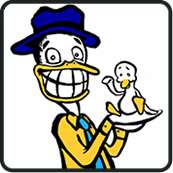1. We suggest you go with a course that gives you several weeks to absorb the dense lectures and book readings on various topics such as buoyancy, diving physics, and depth and time limits.
2. At the end of your course, you will be required to take a written test. You must pass it to become certified.
3. In addition, you'll need to know how to use your dive tables like the back of your hand (that is, calculate surface interval times for multiple dives and how much time you need to give yourself before increasing or decreasing your depth).
4. While you are reading and studying, you will also be taking swimming pool training dives.
5. Most U.S. based scuba diving agencies have a 200-yard minimum swimming requirement (300 yards for the YMCA) for certification.
6. There are also survival/safety requirements that will be tested in the pool such as treading water and tired diver tow (dragging a tired swimmer to "shore").
7. The final step on your way to being a scuba diver is to try an open water dive. You will be required to pass a series of five open water dives in a lake, quarry, ocean or other large body of water. During the open dive, you will have to prove that you have learned everything, including caring for your equipment, knowing the proper hand signals, properly using the B.C., and knowing what to do in an emergency.
SoYouWanna know more? Check out our full-length article SYW know how much it costs to study martial arts?

